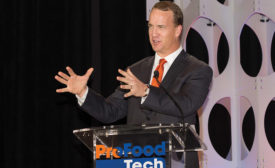Dairy Processor News
Now hiring
Dairy processors have vacant positions to fill. What’s the secret to landing that job? Have good personal chemistry and speak English.
Read More
Spring flush
Prediction: U.S. to be awash in organic milk this year
One organic dairy coop expects 5% growth in milk receipts but has imposed a quota on members and stopped contracting with new members in March.
May 6, 2017
JonnyPops is taking its ice cream novelty business to new heights
JonnyPops co-founders Connor Wray and Erik Brust are taking their ice cream novelty business to new heights.
May 5, 2017
Dairy processors must watch trends in farming, retailing
Dairy processors deal with all three of these constituencies as buyers, sellers and brand marketers. Your success depends upon the quality of your relationships with each.
May 5, 2017
In Memoriam
Gary Rogers, former Dreyer’s Grand Ice Cream chairman, has passed away
Mr. Rogers and William F. Cronk turned Dreyer’s Grand Ice Cream into the best-selling ice cream company in the United States.
May 4, 2017
Stay ahead of the curve. Unlock a dose of cutting-edge insights.
Receive our premium content directly to your inbox.
SIGN-UP TODAYCopyright ©2024. All Rights Reserved BNP Media.
Design, CMS, Hosting & Web Development :: ePublishing








